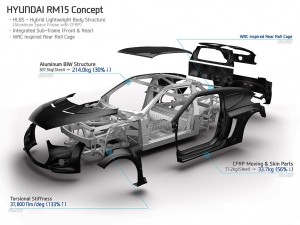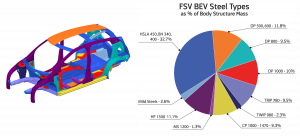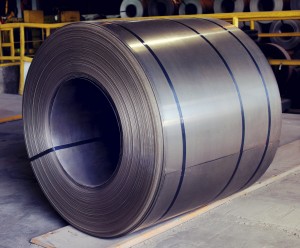Many lightweighting initiatives under way to achieve CAFÉ standards
Lightweighting, a concept about building cars and other vehicles lighter for better fuel efficiency and overall performance, is becoming a heavy burden on automotive industry- OEMs and tier-1 component suppliers. They have initiated several programmes and projects to achieve the Corporate Average Fuel Efficiency (CAFE) standards by lighweighting. For lightweighting, the automotive industry has multiple options like increased use of materials like carbon fibre, plastic, composites, aluminium foam, special steel to lessen vehicle weight. Many plastics have a high strength-to-weight ratio. The search to replace car parts with lighter ones is not limited to any one type of part like engine or transmission system or to any particular material.
The demand for better fuel efficiency, more comfort, lightweighting and environment friendliness lead to the development of more innovative materials across the globe. The big challenge for the industry is that the new automotive materials should be stronger, so that parts can be made thinner while maintaining safety, and also more formable so that automakers can utilize their current part production infrastructure. Formability is a big issue as it requires corresponding technological developments.
OEMs and suppliers have much work to do to hit the targets. It is reported that, of the 19 car manufacturers in India, eight are near the target, but the rest still have a long way to go. The manufacturers are compelled to engage in light weighting due to new emissions standards and fuel economy.
CAFÉ standards
Vehicle weight reduction or mass reduction is primarily focused on how to increase fuel economy and meet the upcoming CAFE standards, which will be implemented in India from 2017 and again in 2022. This will require OEMs to meet the target of 130g/km in 2017 and 113g/km in 2022 based on the average weights of 1,037kg and 1,045kg, respectively. Unlike in Europe or the US, the Indian automotive industry is predominantly made up of small cars. In India also customer preference is moving towards sedans and SUVs. This may shift the average weight from 1,037kg to 1,145kg.
Lightweighting is much more than fuel economy. Manufacturers can leverage lightweighting as a business model as opposed to a reaction to government policy imperative. It is also a big business and economic opportunity. By changing a container from steel to plastic, truckers can carry close to 600kg to 800kg more in payload. The benefit of lightweighting for transportation is that cost-per-tonne goes down, and the OEM becomes more competitive. Lightweigthting will reduce the vehicle maintenance cost also.
Lighter vehicles are more fuel efficient. This could spur new vehicle sales in the market where consumers regard fuel economy as one of the most important factors in a new car. Fleet operators would reap the rewards by switching materials around. Reports say that lightweight forged aluminium wheels have over 75% penetration in North American trucks. Swapping to aluminium is happening in India also as running costs can be reduced by as much as 28%. This business aspect behind lightweigting should be its motivating factor.
However, the biggest hurdle for the Indian OEMs to meet the new standards, and reap the business advantages is the absence of experienced suppliers of appropriate materials. The domestic OEMs also are focusing their efforts on researching lightweight materials and how best to use them in future vehicle platforms. OEMs will require a better knowledge base of lightweight materials and suppliers that can cost-effectively produce lightweight components to the necessary specifications.
The materials like aluminium and carbon fibre, now available for manufacturers seeking to lightweight their vehicles, are more expensive, require significant new investment in parts production and do not have existing supply chains to support high volume automotive applications. In addition, these other lightweighting materials may have performance limitations both in production and on an aftermarket basis.
New class of steel
For the OEMs and the suppliers a more affordable path to weight reduction would be to use new high strength steels. Steel has been the material of choice of the automotive industry since the first vehicles were manufactured more than 100 years ago because it is readily available, cost effective, and highly recyclable. For structural components, such as those in the body-in-white, automakers used mild steels given their formability at room temperature and affordable cost. In the 1990s, high strength steels were introduced to address increasing safety requirements and minimise weight increases.
Recently, the US-based NanoSteel, a leader in nano-structured steel materials, has produced and delivered in the market a new class of advanced high strength steels (AHSS). The company claims that the steel will increase performance and meet the OEMs’ demands for materials that would enhance safety and fuel economy.
NanoSteel has supplied its first AHSS to General Motors for initial testing. According to the company, its new AHSS is designed to provide automakers with a new standard in material performance. It is poised to accelerate vehicle lightweighting initiatives focused on affordably meeting rising global fuel-economy regulations.
According to a company statement, NanoSteel’s commercially produced automotive sheet steel overcomes the historical trade-off between strength and formability by delivering exceptional levels of both properties at the same time (approximately 1200 MPa tensile strength and 50 percent elongation). The high strength allows designers to create parts utilizing thinner-gauge material (less weight) while the high elongation allows manufacturers to produce the newly designed parts without expensive processing techniques, employee retraining or additional capital costs. The unique combination of properties also allows engineers the design freedom to create novel part shapes, which further reduces weight.
The NanoSteel CEO and President David Paratore, has said that, “many advanced materials with outstanding properties end up abandoned because they are too hard to use or too expensive to make. NanoSteel’s advanced high strength steel is designed to be both easy to produce-using conventional alloying elements with standard slab casting equipment; and easy to use-enabling the stamping and forming of parts at room temperature without additional manufacturing infrastructure or investment, such as that required for ‘hot’ stamped parts.”
Industry Initiatives
For lightweighting of vehicles the OEMs and suppliers have been adopting different approaches including the use of materials lighter than steel and new class of formable steel by employing equal rigidity design method.
General Motors is claimed to be at the forefront of integrating lightweight materials and innovative manufacturing techniques into its new passenger cars and trucks. Taking a multi-pronged approach to tackling lightweighting, the automaker is developing new assembly materials and challenging its engineering team to come up with new innovative approaches to vehicle construction.
Hyundai Motors in its 6th generation Elantra’, launched in India recently, uses more advanced high strength steel (AHSS) for lightweight. “The latest Elantra is made with 53% of AHSS, 32% more than in the previous model. AHSS components are used to increase stiffness of chassis and protect passengers effectively in case of collision. Also the chassis structure is developed to give stability and actual mileage improvement during high-speed driving. The AHSS, manufactured by Hyundai Steel, has higher yield and tensile strength than traditional automotive-grade steel,” Rakesh Srivatsava, Senior Vice President and Division Head, Hyundai Motors India Ltd, has said.
The US-based Tenneco Automotive, one of the world’s largest automotive equipment suppliers, is taking concrete steps to reduce the weight of the products it manufactures. “There are many weight reduction activities going on in Tenneco. In the suspension system we have shaved off some weight by using mono brackets. Earlier we were using twin brackets to mount the suspension, but now by using mono brackets we have reduced the bracket weight by 10-15% directly. This year we provided an aluminium top mount to one of our customers. There are also polyurethane compression bumpers that replace natural rubber. We are also developing polymer rod guides as a replacement for sintered material and have replaced sheet metal parts with plastic bearings, which has significantly reduced the weight of the system,” Pankaj Kapoor, Deputy Managing Director, Tenneco Automotive India, has said.
Trelleborg, a world leader in engineered polymer solutions that seal, damp and protect critical applications in demanding environments, produces the best-in-class elastomer and polytetrafluoroethylene (PTFE)- based seals. Trelleborg Sealing Solutions is working on to bring down the weight of its products while providing better sealing, according to the The Head of Sales Engineering for the European Automotive Hub for Trelleborg Sealing Solutions, Axel Weimann.
Sriram Viji, Executive Director, Brakes India Private Limited, said, “We are working on alternate materials to stride parallel with the lightweighting market. The evolution ascends from steel to aluminium and now aluminium to plastics wherever applicable. Plastic parts are replaced in the place of aluminium and cast iron but the material change alone would not serve the purpose the design has to be changed and our R&D continuously works on that.”
Tata Steel, along with Indian Institute of Technology Madras, has set up an Advanced Materials Research Centre to develop products for green energy and for light weight technologies using carbon-based materials. ACI













Leave a Reply